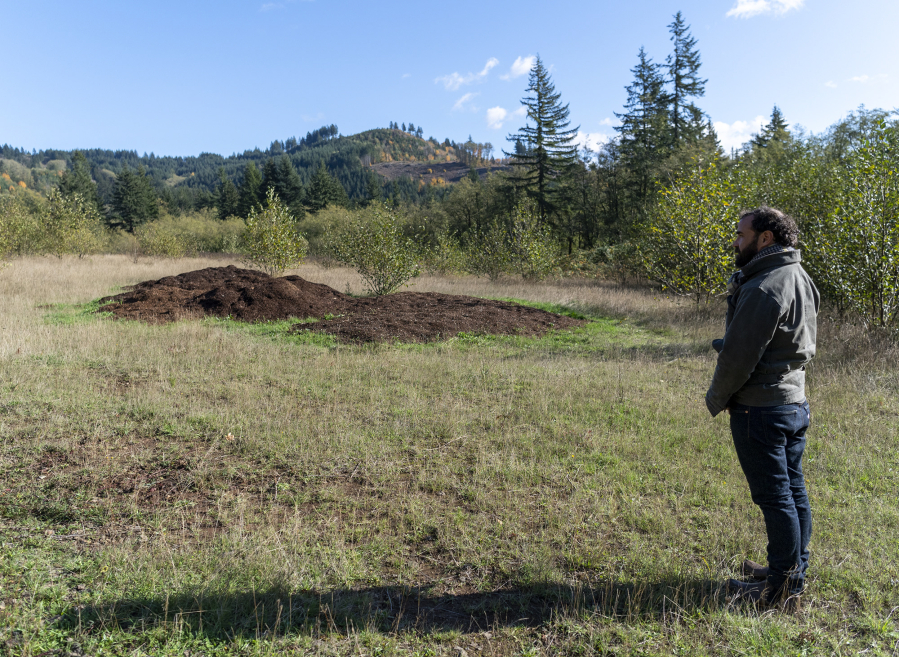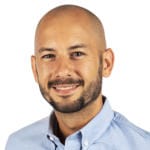EAST OF BATTLE GROUND — Elliot Rasenick was silent for a long moment, the stillness broken only by the sound of a crow’s caw, flowing streams, and the wind rustling trees in the valley.
On 700 acres of recovering timberland near Bells Mountain east of Battle Ground, surrounded by shallow hills, he meandered toward a mound of deep-brown mulch with his head bowed.




